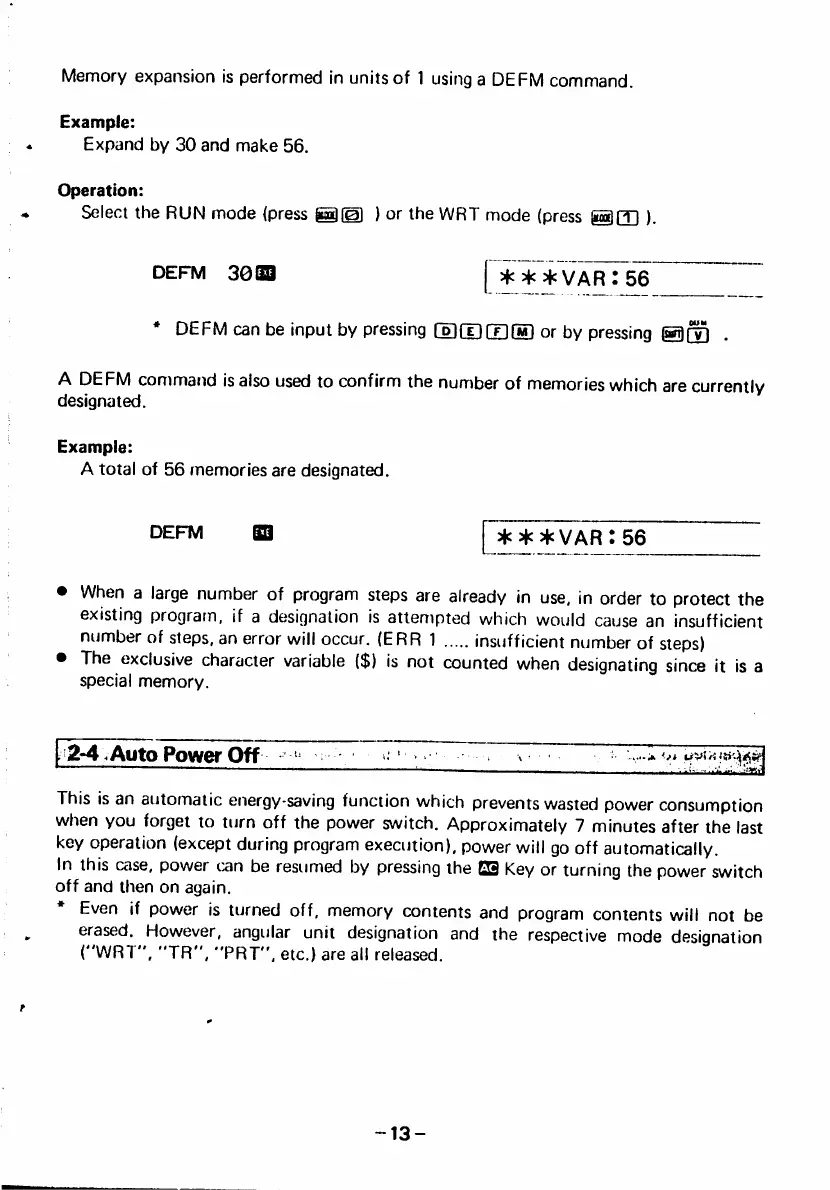Memory expansion Is performed in units of 1 using a DEFM command.
Example:
Expand by 30 and make 56.
Operation:
Select the RUN mode (press ® (^ ) or the WRT mode (press @(T| ).
DEFM 30aa I * * * VAR : 56
* DEFM can be input by pressing (1](T)(T)(m] or by pressing .
A DEFM command is also used to confirm the number of memories which are currently
designated.
Example:
A total of 56 memories are designated.
DEFM SQ [ * * * VAR : 56
• When a large number of program steps are already in use. in order to protect the
existing program, if a designation is attempted which would cause an insufficient
number of steps, an error will occur. (ERR 1 insufficient number of steps)
• The exclusive character variable ($) is not counted when designating since it is a
special memory.
This is an automatic energy-saving function which prevents wasted power consumption
when you forget to turn off the power switch. Approximately 7 minutes after the last
key operation (except during program execution), power will go off automatically.
In this case, power can be resumed by pressing the Q3 Key or turning the power switch
off and then on again.
Even if power is turned off, memory contents and program contents will not be
erased. However, angular unit designation and the respective mode designation
("WRT", "TR", "PRT", etc.) are all released.
-13-
